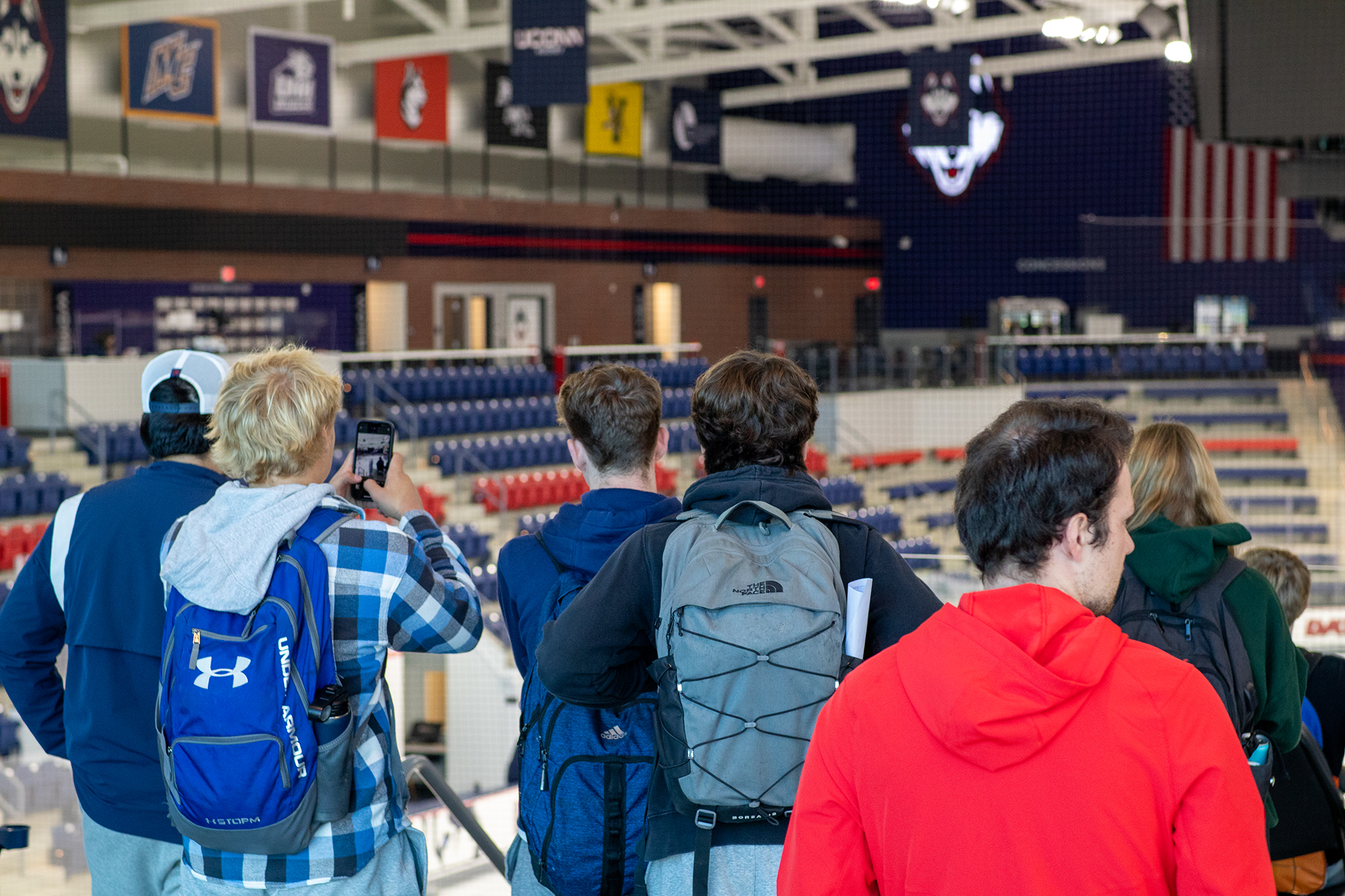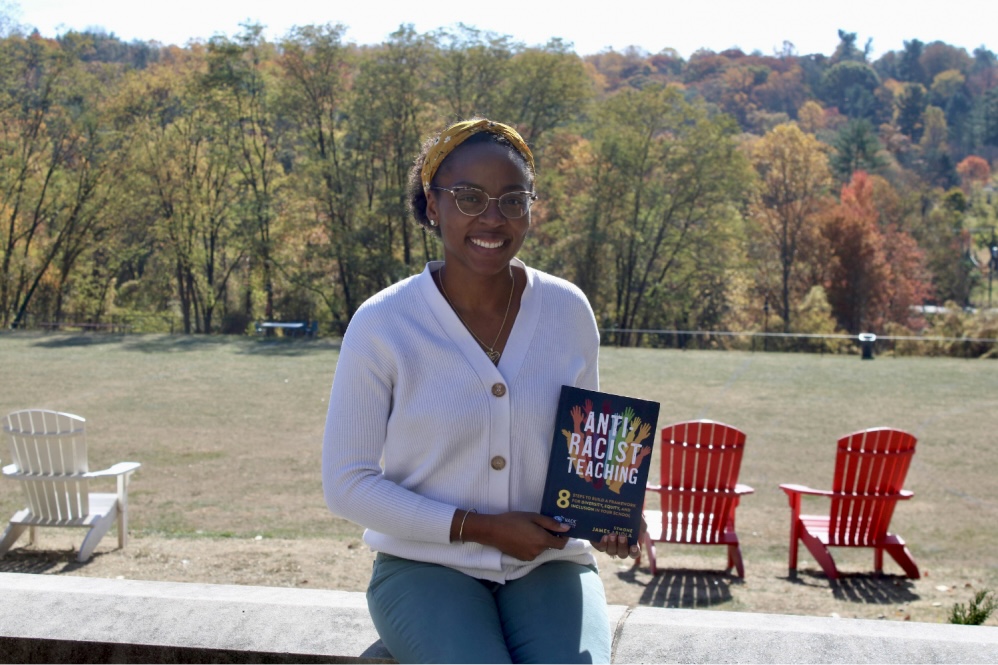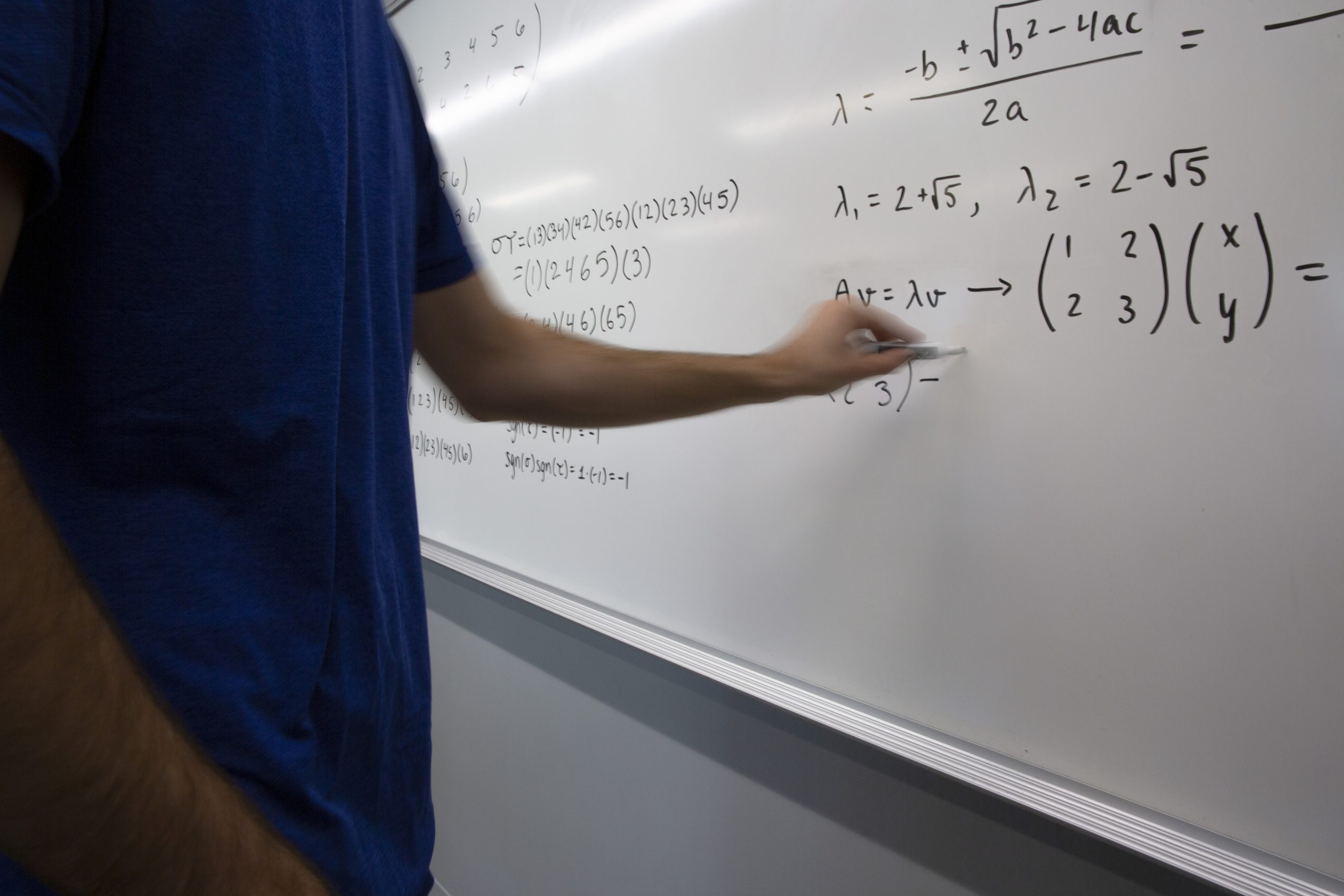From behind his camera, Jerauld A. Manter captured almost 50 years of progress at Storrs ranging from scenes of everyday campus life to visits from movie stars, academic dignitaries, and even First Lady Eleanor Roosevelt.
As its unofficial photographer and a longtime professor of entomology and ornithology, Manter (1888-1990) was a behind-the-scenes mainstay at UConn during one of its most formative periods, from the time he joined the onetime Connecticut Agricultural College in 1912 until well after his retirement in 1953.
The immense scope and volume of his work would comprise a breathtaking career for any photographer. But what makes Manter’s accomplishments even more notable is that he took his pictures as an enthusiastic but uncompensated photo buff — while at the same time teaching, researching, and writing books as a respected professor.
To honor the legacy of its first “official unofficial photographer,” as he jokingly called himself, UConn recently rechristened the former Horsebarn Hill Road Extension to Manter Road.
It’s a main connection from Route 195 to the Dairy Bar area and fittingly, to buildings housing programs of his longtime employer, the College of Agriculture, Health and Natural Resources.
Described by his contemporaries as quiet and dignified, Manter left UConn with a priceless trove of more than 130,000 photographic prints and negatives documenting life on and near campus over more than four decades. Without his efforts, many of UConn’s historic milestones would have been known only by descriptions or entirely lost to time.
“Manter has made a contribution to this institution that cannot be matched. His photographic history alone is worth every penny we ever paid him,” longtime President Albert N. Jorgensen told then-Provost Albert Waugh in 1947, according to Waugh’s diary.
Manter was barely older than his students when he came to Storrs for an $840-a-year job – just shy of $22,000 in today’s dollars — with his degree from what was then New Hampshire State College in his home state.
He rode into campus on a stagecoach from the nearby Eagleville train depot, living initially in a home on UConn’s Faculty Row. He later moved to Gurleyville Road in a neighborhood with several other professor friends nearby and an unending variety of birds to watch and feed.
The photos he took over the next several decades provide an unmatched window into daily student life, agricultural and academic events, campus traditions, and construction of several of today’s iconic and historic UConn core campus buildings.
He seemed to be everywhere: from the fire that destroyed Grove Cottage, the first women’s dorm, in 1919; to burial of the first Jonathan the Husky dog in 1935; to horse shows, greased-pig contests, athletics matches, and every kind of severe weather event imaginable.
In addition to campus pictures, Manter also took hundreds of other pictures specifically of the region’s birds for his seminal book, “Birds of Storrs, Connecticut and Vicinity,” which will “always stand as the pioneer work for northeastern Connecticut” on the topic, according to James A. Slater, a longtime friend of Manter’s and fellow UConn entomology professor, in a piece for the Connecticut Warbler, the publication of the Connecticut Ornithological Association.
Manter was an early pioneer in bird-counting in the region, gently holding them and quickly affixing a tracking band to their leg. Then, he’d reward them with seeds that some learned to eat directly from his hand, especially the curious chickadees, recalled Jerry Manter, one of Jerauld Manter’s five grandchildren.
He even has a species of fungus gnat named in his honor: the Apemon manteri, which Charles W. Johnson, an entomologist from the Boston Society of Natural History, discovered in 1930 in Mansfield while collecting specimens with Manter along the Willimantic River.
Jerry Manter recalls asking his grandfather to describe the bug that bears his name. Instead of the detailed scientific description his grandson expected, Manter replied with typical dry humor, “Well, I always thought of it as a rather handsome bug.”
Friends often visited Manter at his Storrs home in the years after his retirement, chatting companionably over photographs and slides while Manter scattered sunflower seeds on a patio table at his elbow so he could watch the omnipresent chickadees, tufted titmice, and others who came down to snack.
“He was the epitome of the quiet, competent, unassuming New Englander,” Slater recalled in his Connecticut Warbler piece, a lengthy and affectionate memorial of his late friend’s professional and personal life. “He was never pretentious and, if anything, was self-effacing … Everything he did, he did well.”
Only close friends such as Waugh and Slater called him Jed, and a select few were invited to join him in his darkroom in Beach Hall’s attic and watch him develop his pictures.
He could also often be found on the sidelines at football games, capturing the action on film for review later in practices; and led Boy Scout troops, wartime scrap paper drives, and other campus and community activities.
Among one of the most important UConn events Manter captured on film: the bill-signing ceremony in 1939 when Connecticut State College was renamed the University of Connecticut.
As a UConn retiree 25 years later, he screened the film for a crowd of dignitaries who Waugh described as “talking and sopping up cocktails” until they were uniformly entranced by the historic scenes playing out on the screen Manter had set up nearby.
“No account of Jed Manter would be meaningful without some comments about his ability and enthusiasm for photography,” Slater wrote in his Connecticut Warbler piece.
“This interest came from knowledge given him as a young boy, this time by a relative. He was in fact, although as he frequently pointed out, not officially the (UConn) photographer,” Slater wrote. “His photographs of early scenes and sporting events are in themselves a legacy of the early years at Storrs that would have been irretrievably lost without his devotion and diligence.”
A guide to the collection of Jerauld Manter’s photography can be found here, and the more than 16,000 images that have been digitized can be accessed here.



